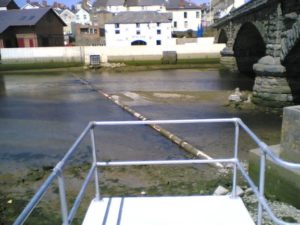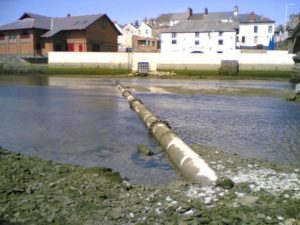Istanbul is… sprawling. I stood on this footbridge, over the water, to try to comprehend the scale of the place, but it’s just massive. The hills, which help the tall buildings to tower over you no matter where you stand, only serve to exaggerate the effect. Quite the spectacle of human settlement.
Tag: river
Water Science #2
Back in 2019, the kids – so much younger back then! – and I helped undertake some crowdsourced citizen science for the Thames WaterBlitz. This year, we’re helping out again.
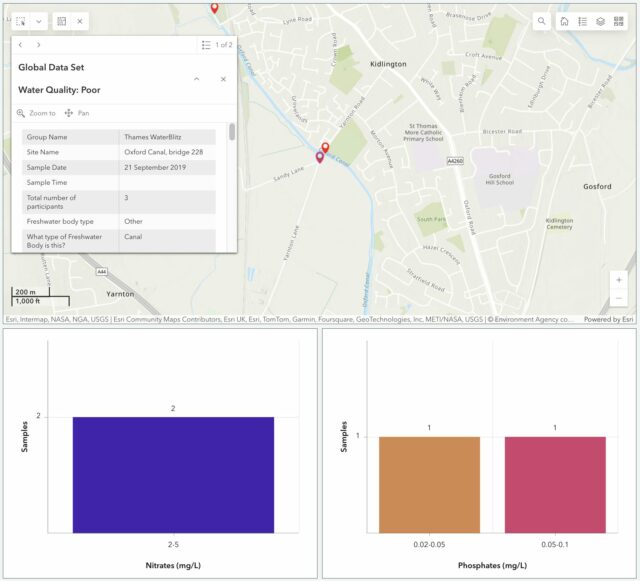
We’ve moved house since then, but we’re still within the Thames basin and can provide value by taking part in this weekend’s sampling activity. The data that gets collected on nitrate and phosphate levels in local water sources – among other observations – gets fed into an open dataset for the benefit of scientists and laypeople.
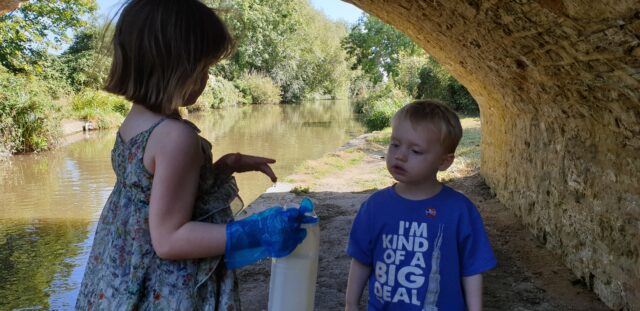
It’d have been tempting to be exceptionally lazy and measure the intermittent water course that runs through our garden! It’s an old, partially-culverted drainage ditch1, but it’s already reached the “dry” part of its year and taking a sample wouldn’t be possible right now.
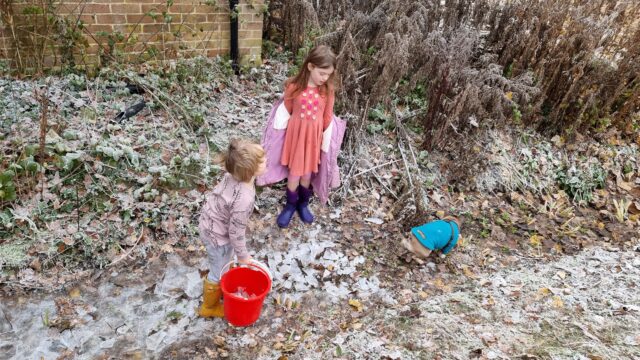
But more-importantly: the focus of this season’s study is the River Evenlode, and we’re not in its drainage basin! So we packed up a picnic and took an outing to the North Leigh Roman Villa, which I first visited last year when I was supposed to be on the Isle of Man with Ruth.

Our lunch consumed, we set off for the riverbank, and discovered that the field between us and the river was more than a little waterlogged. One of the two children had been savvy enough to put her wellies on when we suggested, but the other (who claims his wellies have holes in, or don’t fit, or some other moderately-implausible excuse for not wearing them) was in trainers and Ruth and I needed to do a careful balancing act, holding his hands, to get him across some of the tougher and boggier bits.
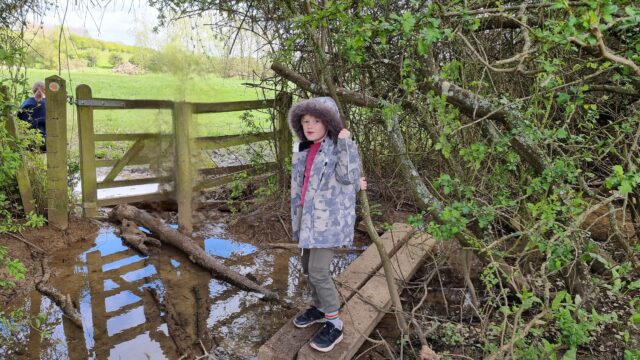
Eventually we reached the river, near where the Cotswold Line crosses it for the fifth time on its way out of Oxford. There, almost-underneath the viaduct, we sent the wellie-wearing eldest child into the river to draw us out a sample of water for testing.
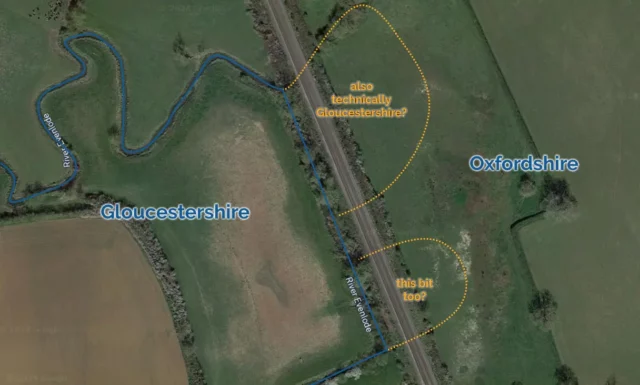
Looking into our bucket, we were pleased to discover that it was, relatively-speaking, teeming with life: small insects and a little fish-like thing wriggled around in our water sample2. This, along with the moorhen we disturbed3 as we tramped into the reeds, suggested that the river is at least in some level of good-health at this point in its course.

We were interested to observe that while the phosphate levels in the river were very high, the nitrate levels are much lower than they were recorded near this spot in a previous year. Previous years’ studies of the Evenlode have mostly taken place later in the year – around July – so we wondered if phosphate-containing agricultural runoff is a bigger problem later in the Spring. Hopefully our data will help researchers answer exactly that kind of question.
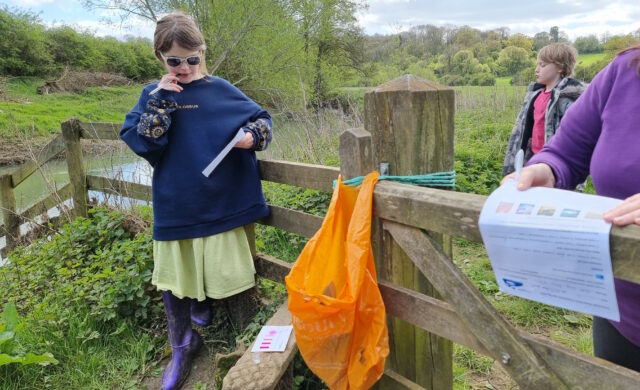
Regardless of the value of the data we collected, it was a delightful excuse for a walk, a picnic, and to learn a little about the health of a local river. On the way back to the car, I showed the kids how to identify wild garlic, which is fully in bloom in the woods nearby, and they spent the rest of the journey back chomping down on wild garlic leaves.
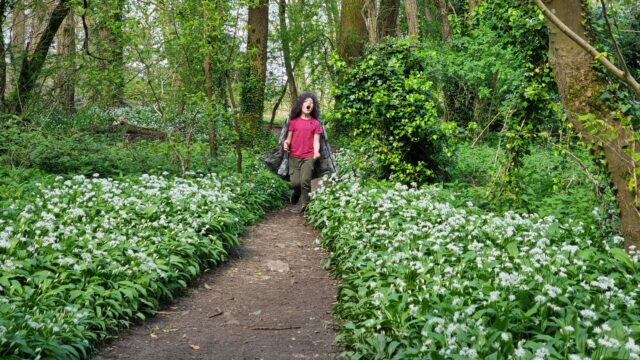
The car now smells of wild garlic. So I guess we get a smelly souvenir from this trip, too4!
Footnotes
1 Our garden ditch, long with a network of similar channels around our village, feeds into Limb Brook. After a meandering journey around the farms to the East this eventually merges with Chill Brook to become Wharf Stream. Wharf Stream passes through a delightful nature reserve before feeding into the Thames near Swinford Toll Bridge.
2 Needless to say, we were careful not to include these little animals in our chemical experiments but let them wait in the bucket for a few minutes and then be returned to their homes.
3 We didn’t catch the moorhen in a bucket, though, just to be clear.
4 Not counting the smelly souvenir that was our muddy boots after splodging our way through a waterlogged field, twice
Thames Path 2
This is a repost promoting content originally published elsewhere. See more things Dan's reposted.
…
On our first day‘s walking along the Thames Path, Robin and I had trouble finding any evidence of water for some time. On our second day, we did not have this problem.
After weeks of sustained rain, the fields we walked over as we left Cricklade behind were extremely soggy. On our way out of town we passed Cricklade Millennium Wood, I took a picture for the purpose of mocking it for being very small but later discovered it’s too small to appear on Google Maps and became oddly defensive of it – it’s trying, damn it, we should at least acknowledge its existence.
…
Ruth and her brother Robin (of Challenge Robin/Challenge Robin II fame on this blog, among many other crazy adventures) have taken it upon themselves to walk the entirety of the Thames Path from the source of the river (or rather, one of the many symbolic sources) to the sea, over the course of a series of separate one-day walks. I’ve mostly been acting as backup-driver so far, but I might join them for a leg or two later on.
In any case, Ruth’s used it as a welcome excuse to dust off her blog and write about the experience, and it’s fun and delightful and you should follow along and give her a digital cheer. The first part is here; the second part landed yesterday.
Oxford Under Water
Parts of Oxford have been flooded for the last few days, and apparently the worst is yet to come. I worked from home yesterday, intimidated by the available choices of traversing flooded roads or else taking the hilly 3+ mile diversion around the problem areas, but today: I decided that it was time to man up and cycle in to the office.

Conveniently, we’ve somewhere along the way acquired a large pair of Wellington boots (we think they might have been Paul‘s, but as he’s now left Oxford without them, they’ve been sitting in our charity-shop-box). So I booted up and set out. I was yawning all the way:
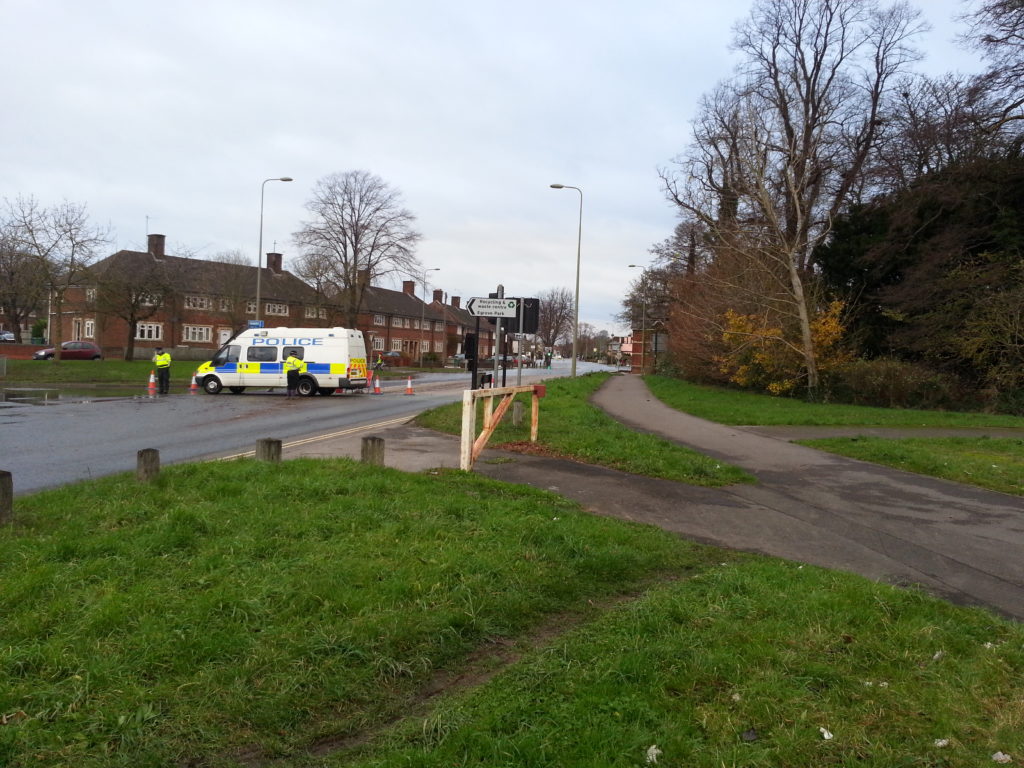
I had to weave my way back and forth around the cyclepaths nearest my house, and – on a couple of ocassions – get off the bike and wade it through: I’d considered riding through some of the larger puddles – my mean pedal-ground clearance is about as high as the top of my boots, anyway – until I met a soaked cyclist coming the other way: he’d become disbalanced going over a submarine kerbstone and fallen into the freezing water. Seeing that quickly made me choose the safer strategy!

Alongside the lake was one of the most flood-damaged areas, but heavy barriers had been erected and pumping engines were working at returning the water to the “right” side of them. The lake bridge was completely closed off: it looked like it might be traversable, but if the water gets any higher, it won’t be.
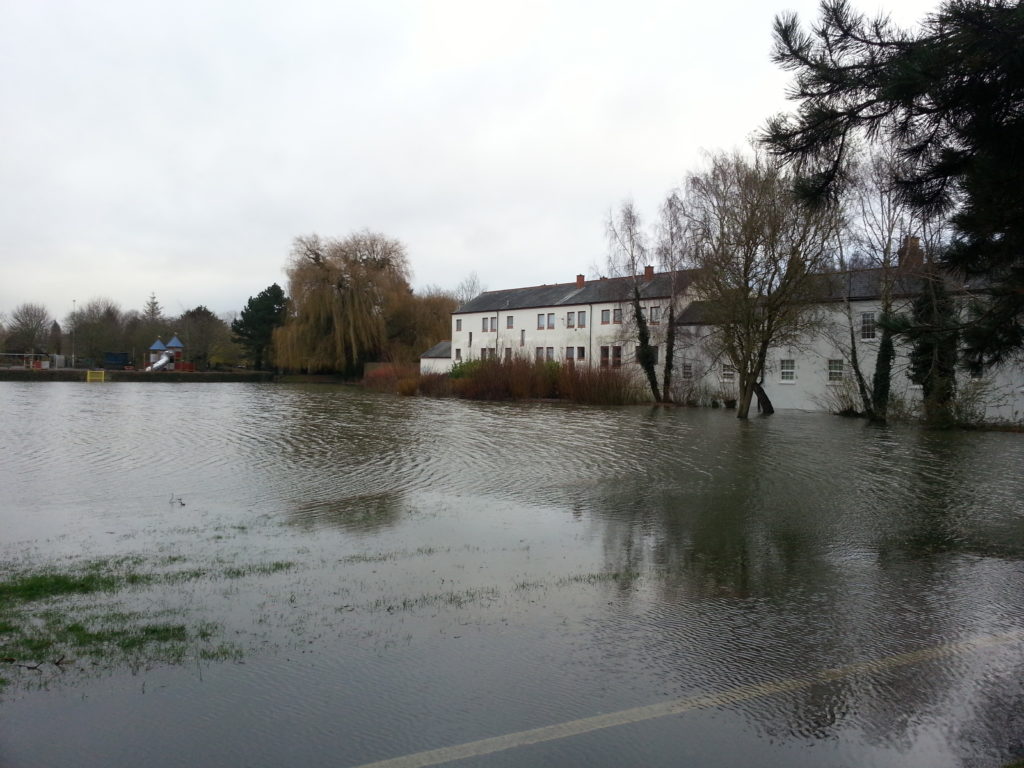
I took the cycle route through Hinksey Park in order to avoid the flooded parts of Abingdon Road, which runs parallel, but I’m not sure that it was much better. In the photo above, you’d be forgiven for thinking that you’re looking at the lake… but in actual fact, the lake is behind me: that’s the playing fields. You can just about make out the line down the middle of the cycle path, through the murky water.

Pressing on, I came to the Thames Path, which my route typically follows for a short distance to the footbridge into the city centre. And that’s when I realised quite how high the river really is.
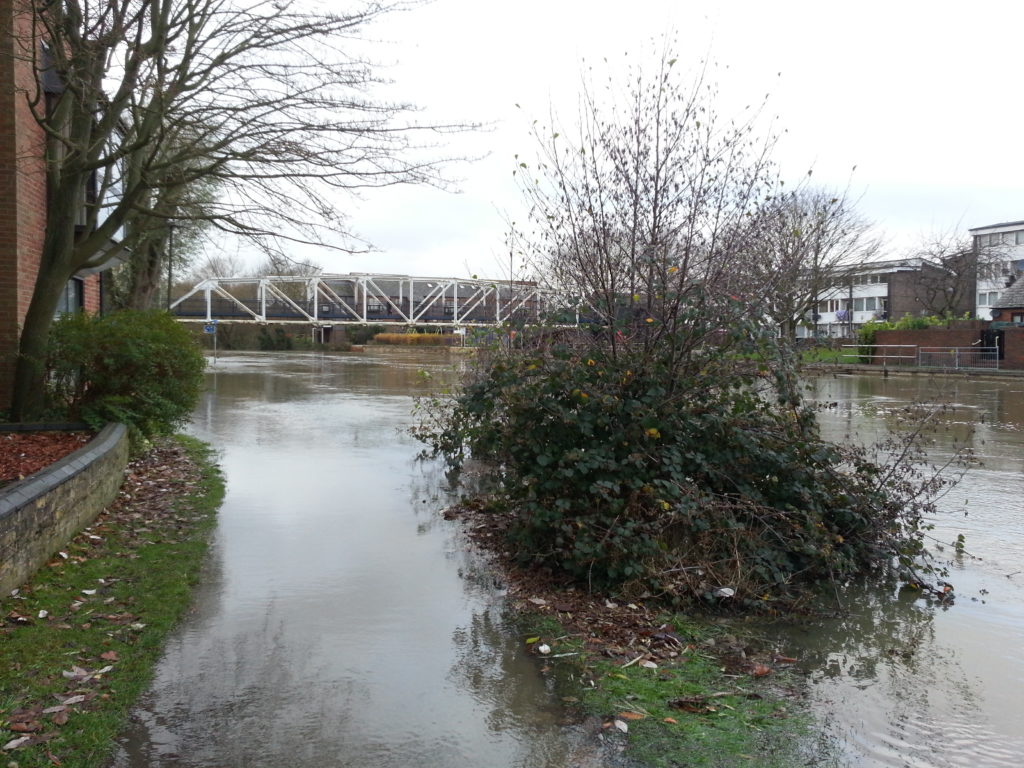
By the time I found myself on a footpath with a current, I realised that my route might need a little bit of a rethink. With the bridge I was aiming for just ahead, though, I was able to double-back and cut through an alleyway (between some seriously at-risk houses), duck under a couple of “footpath closed” barriers, and splash out to the bridgehead.
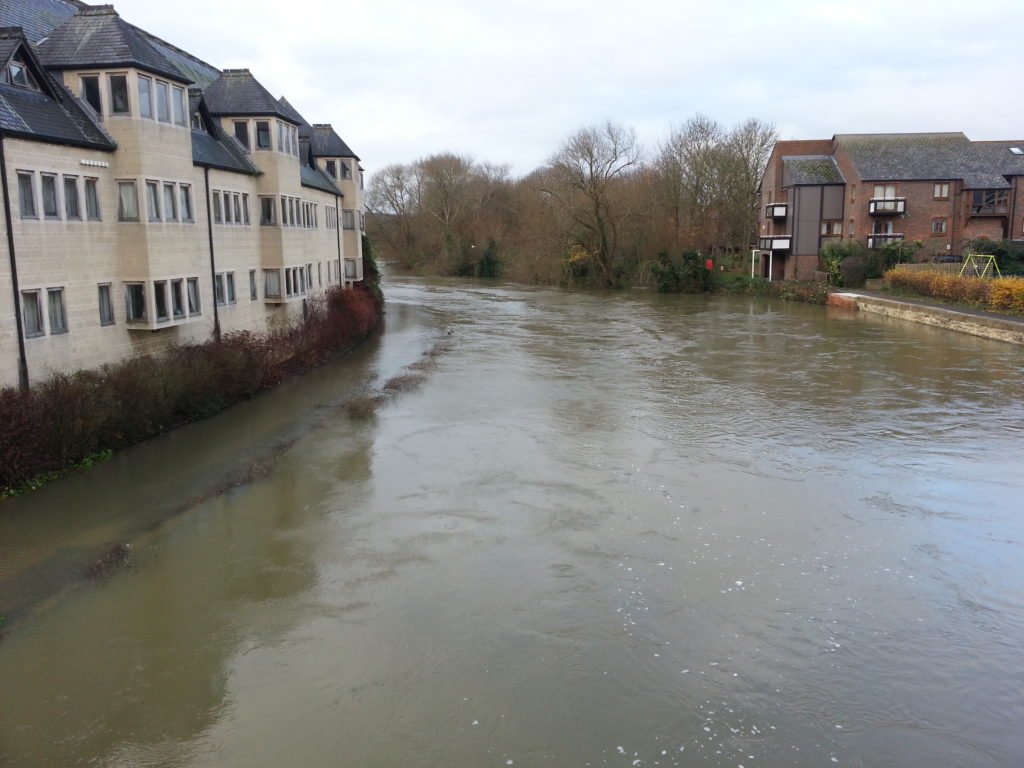
By the time I was on the higher, better-reinforced East bank for the river, things began to improve, and within a few minutes I was right in the city centre. There, you wouldn’t know that, only a short distance away, a significant number of streets were underwater. To sit in the dry, on Broad Street, in the middle of Oxford, it seems strange to think that on the edge of town, people are being evacuated from their homes.
Further reading:
- Flood warning for Kennington, from the Environment Agency (looks like we’re just on the right side of the road not to be included in the “flood warning area”).
- “Live” upstream and downstream water level measurements at nearby Iffley Lock (there’s a beautiful moment in the graphs for yesterday morning when they clearly started using the lock itself to “dump” water downstream, occasionally bringing the level to within the typical range.
- Video of evacuations from Botley
- Jack FM’s Traffic Reports have an up-to-date list of roads closed as a result of flooding
A Punting Story
This story actually relates to an event that happened in mid-2010, but I only recently got around to finishing writing about it.
Once upon a time there was a boy named Dan.
 Dan lives in a big house with his friends Ruth and JTA.
Dan lives in a big house with his friends Ruth and JTA.
 (their other friend, Paul, lives in the house, too… but he isn’t in this story)
(their other friend, Paul, lives in the house, too… but he isn’t in this story)
 One day, Dan and Ruth and JTA went on an adventure. They packed up a picnic with all their favourite
foods.
One day, Dan and Ruth and JTA went on an adventure. They packed up a picnic with all their favourite
foods.
 Big soft sandwiches, teeny-tiny sausages, cheese-with-holes-in, and a big box of chocolates. Then
they got onto a bus.
Big soft sandwiches, teeny-tiny sausages, cheese-with-holes-in, and a big box of chocolates. Then
they got onto a bus.
 Soon, they saw a big, wide river. “Let’s get off here,” said Ruth. JTA pressed the button to tell the
bus driver to stop.
Soon, they saw a big, wide river. “Let’s get off here,” said Ruth. JTA pressed the button to tell the
bus driver to stop.
 At the river, there was a man with all kinds of boats: boats with pedals, boats with paddles, and
boats with poles.
At the river, there was a man with all kinds of boats: boats with pedals, boats with paddles, and
boats with poles.
 “Can we borrow one of your boats?” Dan asked the man.
“Can we borrow one of your boats?” Dan asked the man.
“Okay,” he said, and gave Dan a long pole.
 Ruth and JTA got into the boat and sat down. Dan stood up on the very back of the boat. It was
very wobbly!
Ruth and JTA got into the boat and sat down. Dan stood up on the very back of the boat. It was
very wobbly!
Dan used the pole to reach all the way down the bottom of the river, and pushed the boat along. It was hard work!
They found a shady tree in a park, stopped the boat, and ate their picnic.
They drank some fizzy wine and felt all bubbly and dizzy. Soon it was time to get back on the boat and go back along the river.
One time, Dan almost fell into the water! But luckily he didn’t, and he, Ruth and JTA got back safely.
And they all lived happily ever after.
My New Route Home From Work
Tide permitting, I’ve been taking a new route home from work. It’s not much of a shortcut, not even taking 30 seconds off my time to get home, but it’s certainly a lot more fun than the regular route. Of course; it’s only accessible at high tide, and it does take a little bit of balancing…
There’s a convenient ladder at the Aberystwyth side of the river, that can be seen up the side of the sea defences in the third photo.





